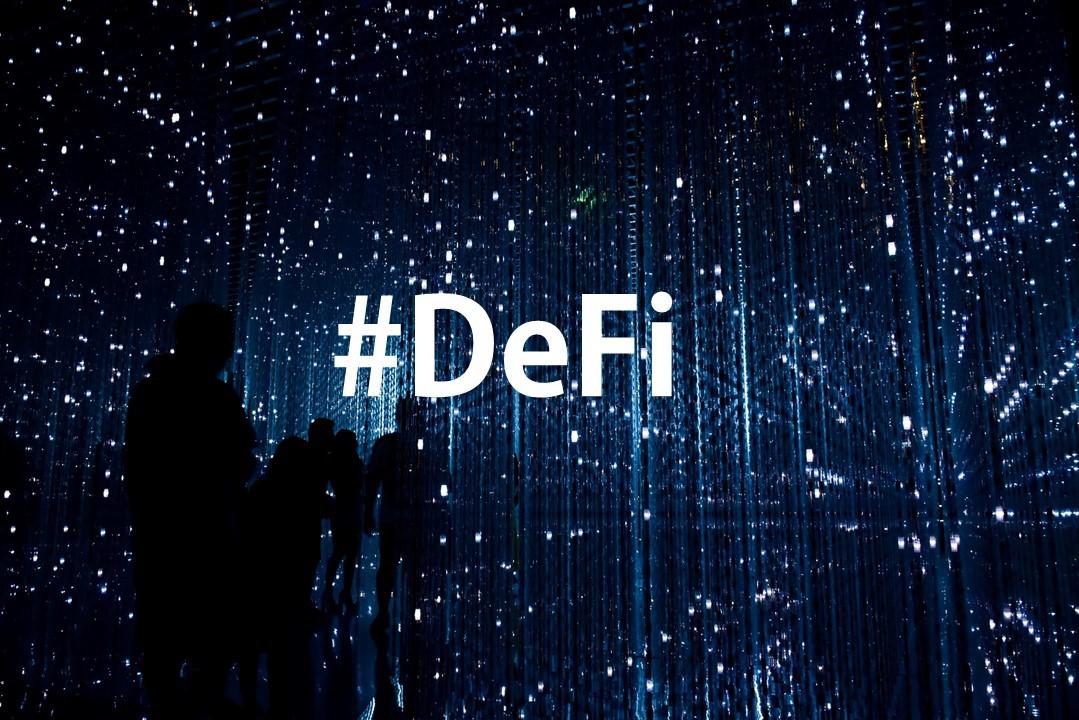We are excited to bring Transform 2022 back in-person July 19 and virtually July 20 - 28. Join AI and data leaders for insightful talks and exciting networking opportunities. Register today!
The entire cryptocurrency space continues to evolve rapidly, having surpassed $3 trillion market capitalization for the first time in 2021. Further, global blockchain spending has surged 7 times over the past four years to an estimated $6.6 billion in 2021, and is projected to more than triple by 2024. That’s impressive given the seeds of the crypto industry were sowed with the launch of Bitcoin just over a decade ago.
Today, we have come a long way with the blockchain industry growing beyond just peer-to-peer transactions, as different sectors such as NFTs, GameFi, metaverse, and decentralized finance (DeFi) have emerged. But none has attracted the attention of the traditional financial industry like DeFi.
DeFi = decentralized finance
DeFi is an eclectic mix of blockchain technology, digital assets and financial services that seek to disintermediate finance. The market experienced explosive growth in 2020, which many even call the “Year of DeFi.” That said, it is still early in its maturation.
According to Defillama, the total value locked (TVL) in DeFi has increased from $625 million in April 2020 to now, keeping above a whopping $211 billion but down from a peak of over $255 billion in December 2021. Currently, it is dominated by the likes of DEX Curve, which accounts for 9.6% of this TVL, staking platform Lido, money market Anchor, and lending protocol Aave.
DeFi is revolutionizing finance, starting with exchanges, derivatives, asset management, credit, insurance and stablecoins. Unlike traditional finance, which relies on intermediaries to manage and process financial services, DeFi operates in a decentralized environment. Decentralized applications (dApps) are built on public, permissionless blockchains, and services are generally encoded in open-source software protocols and smart contracts.
As a result, investors are putting more cash into those startups focused on DeFi and Web3, according to a report by deal-tracking firm Pitchbook. Young Web3 and DeFi startups have landed investments worth a combined $1.26 billion in Q3 of 2021, which are seen as “highest growth opportunities.”
The fundamentals
In the DeFi sector, dApps provide financial services without requiring centralized intermediaries or institutions. Here, open protocols allow services to be programmatically combined in flexible ways. That’s the total opposite of what the traditional markets stand for. In traditional financial markets, intermediaries serve as agents of trust, liquidity, settlement and security, which have made the current system increasingly complex. The 2008 Global Financial Crisis actually highlighted these intermediated financial systems’ flaws, inefficiencies, structural inequalities and hidden risks.
Besides, legacy financial infrastructure is further rife with shortcomings in the form of slow settlement cycles, inefficient price discovery, liquidity challenges, and the lack of assurance around underlying assets. The remedy is the emergence of decentralized finance, which aims to address these challenges by leveraging blockchain technology to facilitate alternatives to traditional service providers and market structures.
Besides using distributed ledgers as its settlement layer for transactions, DeFi takes advantage of various other technologies such as smart contracts, which are programs that run when predetermined conditions are met. Here, digital assets represent value that can be easily transferred. In DeFi, governance systems give a protocol’s token holders the right to vote on its future.
Wallets, meanwhile, are used to manage assets stored on a blockchain. While custodial wallets are far easier to handle and interact with other applications, non-custodial wallets allow exclusive control of funds through their private keys.
The good and the bad
The opportunity presented by DeFi is pretty straightforward, and much talked about. It eliminates hefty fees charged by banks, brokerages and other financial institutions. DeFi allows for faster and more efficient transactions, reduces counterparty risks, increases functional interoperability to transparency, improves accountability, gives greater stakeholder control, and grants permissionless and fast-paced innovation.

Additionally, being open-source protocols means anyone can build on the platform, while offering opportunities for additional juicy yields on investments that vastly surpass the gains offered in legacy markets.
DeFi has tons of potential in terms of efficiency, innovation and financial inclusion, but at the same time, it has its risks. Some of them are scalability, throughput, transaction fees, limited interoperability across blockchains, over-collateralization and regulatory challenges.
Its early growth stage means DeFi currently promotes short-term returns and attracts unscrupulous actors. For example, rug pulls, scam projects, bad actors and hacking are also pretty common in DeFi. Numbers speak for themselves.
DeFi users actually lost $10.5 billion to theft in 2021, according to a report by Elliptic. Some of the biggest DeFi hacks include Poly Network, which lost $611 million. Then there was the cyberattack on the bridge to Axie Infinity’s Ronin Protocol, where hackers drained $522 million. The most recent DeFi hack took place on April 17. Beanstalk, a stablecoin protocol, lost $182 million in a flash loan attack. Then comes the infamous $326 million Wormhole hack.
These are just a few of the cyberattacks that attracted the media glare and became the talk of the town on social media platforms. The actual numbers are far higher. Such instances show that the DeFi sector is a far cry from a simple and secure way for the masses to deploy their capital.
The latest developments
Despite the risks of using DeFi, the sector is growing and innovating, with several new trends emerging.
Liquidity mining is one of the hottest trends of DeFi, where protocol enables users to provide liquidity and get rewarded in native tokens handsomely. Yield farming is another popular one that combines staking, lending, and borrowing to optimize earnings.
The rise of nonfungible tokens (NFTs) has also paved the way for introducing new products in the market that fuse NFTs with DeFi, such as GameFi or play-to-earn games like Decentraland and The Sandbox. The advent of 5G is also expected to benefit DeFi as it will provide high-speed connectivity significantly.
Then there are decentralized autonomous organizations (DAOs), whose growth can be attributed to the rise of DeFi innovations, that are getting a ton of traction as they reach mainstream consciousness. DAOs are being used for everything from art and sports to crowdfunding and finance.
Some of the most exciting DAOs involve BeetsDAO, a collective focused on buying music-based NFTs; ConstitutionDAO, a group effort to buy a copy of the U.S. Constitution; FriendsWithBenefitsDAO, a members-only social club for crypto; and RaidGuild, a Web3 marketing and design agency for hire.
However, the discussion on DeFi is incomplete without Ethereum, on which the majority of these applications are built due to its capabilities and developer adoption. Ethereum is currently undergoing a shift to ETH 2.0 to improve its scalability. But with other layer 1 blockchains like Terra, Avalanche, Solana, BSC and Polygon, and layer 2 solutions like Arbitrum and Optimism gaining adoption in 2022, cross-chain technology has emerged to enable the smooth movement of information between different networks.
For instance, the DEX Mangata Finance is built on the Polkadot network and bridged with Ethereum to provide low fixed fees and MEV-free trading.
Final word
Overall, DeFi has immense potential for users thanks to being available to everyone worldwide 24/7. These decentralized protocols offer new and diversified investment opportunities. Not to mention the double-digit interest rates that many DeFi protocols offer, which are much higher than the below-1% rates of regulated banks.
This, of course, has giants like Morgan Stanley calling out the DeFi industry to remain “fairly small.” But DeFi, though still new, is fast-growing, attracting investments and users, and working on banking the billions of unbanked.
Peter Kris is the CEO of Mangata Finance.
DataDecisionMakers
Welcome to the VentureBeat community!
DataDecisionMakers is where experts, including the technical people doing data work, can share data-related insights and innovation.
If you want to read about cutting-edge ideas and up-to-date information, best practices, and the future of data and data tech, join us at DataDecisionMakers.
You might even consider contributing an article of your own!
Read More From DataDecisionMakers









